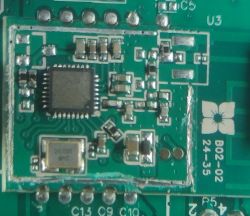FAQ
TL;DR: You can retrofit MCB status sensing cheaply: a phase‑presence controller costs ~£19 and "even works well." For remote actuation, see the accessory options below. [Elektroda, raffin, post #17693304]
Why it matters: Installers and DIYers can add monitoring/remote control to existing single‑pole MCBs without rebuilding a full switchboard.
Quick-Facts
- Auxiliary contacts (NO/NC) and voltage releases mount beside the breaker; two trigger types exist (rise/fall). [Elektroda, Plumpi, post #17690475]
- Motor operators enable remote ON/OFF of MCBs (example: ABB S2C‑CM1 for S200 series). [Elektroda, boe6666, post #17694173]
- Wi‑Fi smart breakers are available off‑the‑shelf; verify certifications before deployment. [Elektroda, sebek3, post #17691063]
- Phase‑presence monitor (e.g., Ropam PMT) gives opto‑isolated status output; approx. £19. [Elektroda, raffin, post #17693304]
- IEC 60898‑1 defines MCBs as protective devices, not as contactors. [IEC 60898-1:2015]
Quick Facts
- Auxiliary contacts (NO/NC) and voltage releases mount beside the breaker; two trigger types exist (rise/fall). [Elektroda, Plumpi, post #17690475]
- Motor operators enable remote ON/OFF of MCBs (example: ABB S2C‑CM1 for S200 series). [Elektroda, boe6666, post #17694173]
- Wi‑Fi smart breakers are available off‑the‑shelf; verify certifications before deployment. [Elektroda, sebek3, post #17691063]
- Phase‑presence monitor (e.g., Ropam PMT) gives opto‑isolated status output; approx. £19. [Elektroda, raffin, post #17693304]
- IEC 60898‑1 defines MCBs as protective devices, not as contactors. [IEC 60898-1:2015]
What should I search for to monitor an MCB’s position?
Search for “auxiliary contact” for your breaker series. Most accessory makers offer clip‑on NO/NC blocks that indicate ON/OFF or TRIP. As one expert put it, “Almost every accessory manufacturer has this on offer.” Use the exact breaker family in your query for compatibility. [Elektroda, juan cabrillo, post #17690471]
What add-ons let me trip an MCB from a controller?
Use voltage releases: shunt‑trip (voltage rise) or undervoltage release (voltage drop). They mount beside the MCB and link mechanically to the lever. “Voltage triggers come in two types as rise and fade.” Wire them to your control output for remote trip. [Elektroda, Plumpi, post #17690475]
Can I remotely switch an MCB ON/OFF without a contactor?
Yes. A motor‑operating device drives the MCB handle for remote ON/OFF. ABB’s S2C‑CM1 is an example for S200 series MCBs. It mounts adjacent to the breaker and provides motorized operation while preserving manual control. Verify model compatibility with your exact breaker line. [Elektroda, boe6666, post #17694173]
Are there off‑the‑shelf Wi‑Fi “smart breakers”?
Yes, consumer Wi‑Fi breakers exist and are sold online. They often claim overcurrent and short‑circuit protection with app or voice assistant control. Confirm certifications and ratings before using them in critical circuits or permanent installations. [Elektroda, sebek3, post #17691063]
Should I use an MCB for frequent load switching?
No. “An overcurrent circuit breaker is not for switching or switching circuits but for protecting them! Relays and contactors are for control!” Use a contactor or relay for frequent operations to avoid premature wear. [Elektroda, Shadowix, post #17693500]
How can I detect circuit presence without watching the lever?
Use a phase‑presence controller. The Ropam PMT provides an opto‑isolated output that your automation input can read. One installer notes it “even works well,” and the cost is about £19, making it a budget status sensor. [Elektroda, raffin, post #17693304]
What if my DIN rail space is already full?
Add‑ons still consume width. If you lack space, you may not be able to fit auxiliary contacts or releases. Consider redesigning the board, using an external enclosure, or relocating less critical modules. “If you don’t have space for it, you won’t do anything.” [Elektroda, CYRUS2, post #17693531]
Can I integrate this with an alarm or automation panel (e.g., Satel INTEGRA)?
Yes. Monitor circuits via free contacts or a phase‑presence sensor, and actuate trips via a voltage release. One user implemented monitoring and control on a Satel INTEGRA panel successfully. Map inputs/outputs accordingly in your panel. [Elektroda, CYRUS2, post #17691178]
Do Eaton/F&G offer motorized MCB solutions?
Yes. The RECmax MP line shows motorized breakers from F&G, later under Eaton. These devices integrate a motor drive for remote operation. Check availability and compatibility with your installation’s ratings and pole count. [Elektroda, jozgo, post #17693296]
Is reclosing into a fault a risk with remote control?
Yes. “A situation may arise where you try to re‑connect a circuit in which there is a short circuit.” Use proper fault diagnosis and consider a contactor with protective interlocks for safe restoration. [Elektroda, blady1k9, post #17692577]
What’s the difference between shunt‑trip and undervoltage releases?
Shunt‑trip actuates the breaker when a control voltage is applied (rise). Undervoltage releases trip the breaker when supply drops below a threshold (fall). Both mount beside the MCB and link mechanically. Choose based on your control logic. [Elektroda, Plumpi, post #17690475]
How do I add status + remote trip with minimal parts? (3‑step)
- Clip an auxiliary contact to the MCB’s side for NO/NC status.
- Clip a shunt‑trip or undervoltage release beside the MCB and wire it to your controller.
- Route status and trip wires to your automation input/output channels.
These accessories couple mechanically to the breaker lever. [Elektroda, Plumpi, post #17690475]
Can an ESP‑based module read a phase‑presence sensor output?
Yes. The phase‑presence controller provides an opto‑isolated output that you can interface to a low‑voltage digital input. Power and isolate per the sensor’s wiring guide, then debounce in firmware for reliable state detection. [Elektroda, raffin, post #17693304]





